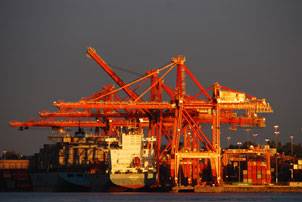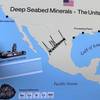Maxview Smart Landing System Installation
In the fourth quarter of 2008, TMEIC GE’s Maxview Smart Landing system entered service on a new ship-to-shore crane at Vancouver’s Centerm container terminal, operated by DP World (Canada) Inc. Operational data from the first 15 months proves that the semi-automatic system has met the company’s performance goals for preventing high-speed landings, which translates into reduced down-time and dollars saved.
Performance results show that on average, when the Maxview Smart Landing system was in use, during pick-ups high-speed landings were reduced to 0.6%t from 35% of total landings, average landing speed dropped to 6.2% from 13.2%, and average kinetic energy imparted during landing was reduced by 85%. During drop-offs, high-speed landings were reduced to 2.4% from 72% of total landings, average landing speed dropped to 5.6% from 15.5%, and average kinetic energy imparted was reduced by 87%.
According to Alan Peterson, Regional Sales Manager for TMEIC GE, a major component to the success of the Maxview Smart Landing system is that, in addition to avoiding high-speed, high-impact landings, safety issues and driver acceptance are just as important, otherwise a major investment can turn into an expensive, unused add-on.
“Today’s mega-crane drivers face unique challenges due to impaired visibility and other distractions. The Maxview Smart Landing system essentially acts as a second pair of eyes, providing an effective and proven solution to prevent high speed landings – one that works with, not against, the driver,” said Peterson.
The Maxview Smart Landing system uses time-of-flight laser radar to measure and profile loads and landing targets, but also uses the same radar to scan the container profile and the suspended load. Two sensors cross-reference data automatically, pinpointing the position of the spreader relative to the trolley while profiling the stack at the same time. As the driver lowers the container into position, a “slowdown envelope” around the spreader regulates the speed of the hoist drive, easing the container gently into its assigned location. The combination of driver control and laser sensing technology results in improved crane productivity, even in the most congested of port storage areas.












